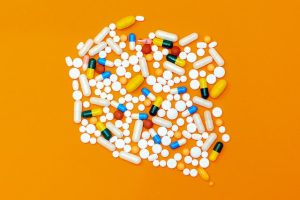GSK Benlysta Approved by FDA and lauched in China
GSK Benlysta Approved by FDA and lauched in China
GSK Benlysta Approved by FDA and lauched in China. GlaxoSmithKline (GSK) recently announced that the U.S. Food and Drug Administration (FDA) has approved Benlysta (Chinese trade name: Beliteng, generic name: belimumab, belimumab) for treatment and is receiving standard treatment Adult patients with active lupus nephritis (LN). It is worth mentioning that Benlysta is the first drug approved by the FDA to treat lupus nephritis (LN). LN is a type of kidney inflammation caused by systemic lupus erythematosus (SLE), which can lead to end-stage kidney disease (ESKD), requiring dialysis or kidney transplantation.

Benlysta was approved for marketing in 2011 and is the first new drug approved for the treatment of SLE in the past 50 years. The drug has two dosage forms: intravenous (IV) and subcutaneous (SC). The IV dosage form is intravenously infused every 4 weeks, and the dosage is adjusted according to body weight (10mg/kg), which takes about 1 hour. There are two forms of SC dosage form: single-dose prefilled syringe and single-dose auto-injector. Patients can self-administer subcutaneous injection after training. This dosage form will provide an important treatment option for SLE patients. It should be pointed out that the SC preparation is only suitable for adults aged ≥18 years, not for children. In addition, Benlysta is not recommended for severely active central nervous system lupus or in combination with other biological agents.
In the United States and the European Union, Benlysta is suitable for the treatment of children and adults with SLE who are receiving standard treatment, aged ≥5 years, and positive for active autoantibodies. In China, Benlysta (Benlysta, belimumab for injection) was approved in July 2019. As the world’s first biological agent approved for the treatment of SLE, Britton has been approved in China to be combined with conventional treatment, which is suitable for active and autoantibody-positive adult patients with SLE who still have high disease activity on the basis of conventional treatment.
Dr. Hal Barron, Chief Scientific Officer and President of Research and Development of GSK, said: “LN is one of the most common and serious complications of SLE. It occurs in up to 40% of SLE patients. This disease can lead to kidney inflammation and may lead to final End-stage renal disease. Benlysta is the first drug approved for the treatment of adult patients with SLE and active LN, and represents an important advance in the treatment of this incurable autoimmune disease.”
This approval is based on the results of the largest and longest phase III BLISS-LN study in patients with active LN. This is a 2-year (104-week) randomized, double-blind, placebo-controlled, post-marketing commitment study. A total of 448 patients were enrolled and Benlysta (intravenous infusion [IV], 10mg/kg) combined Efficacy and safety of standard therapy (mycophenolate mofetil for induction and maintenance, or cyclophosphamide induction, azathioprine maintenance, plus endosterol), placebo combined with standard therapy for the treatment of active LN adult patients. Active LN was diagnosed by kidney biopsy and clinically active kidney disease according to the 2003 International Society of Nephrology/Renal Pathology (ISN/RPS) standards during the screening visit.
The primary endpoint of the study is the primary efficacy renal response (PERR), which is defined as: glomerular filtration rate (eGFR) ≥60ml/min/1.73m2, or eGFR decreased by no more than 20% from before the flare; urine protein: creatinine ratio ( uPCR) ≤0.7; and it is not a treatment failure. The most stringent secondary endpoint of complete renal response (CRR) is defined as: eGFR is less than the pre-flare value by no more than 10% or within the normal range, uPCR<0.5, and is not a treatment failure. Ordinal Renal Response (ORR) is defined as complete, partial, and no response.
The results showed that the study reached the primary endpoint: after 2 years of treatment, compared with the placebo + standard therapy treatment group, the Benlysta + standard therapy treatment group had a statistically significant increase in PERR patients (43% vs 32%, odds ratio [ 95%CI]=1.55[1.04,2.32], p=0.0311). In addition, Benlysta also showed statistical significance compared to placebo in 4 key secondary endpoints, including: complete renal response (CRR, the most stringent measure of renal response) after 2 years, and ordered renal response after two years Response (ORR), PERR after one year, time of death, or kidney-related events. In this study, the safety results of the Benlysta + standard therapy treatment group are generally comparable to the results of the placebo + standard therapy group. The safety results are consistent with the known Benlysta profile.
Systemic lupus erythematosus (SLE) is the most common type of lupus (approximately 70%), which is a chronic, incurable autoimmune disease, accompanied by a series of symptoms, which over time Fluctuations include joint pain or swelling, extreme fatigue, unexplained fever, skin rash, and organ damage. In lupus nephritis (LN), systemic lupus erythematosus (SLE) causes inflammation of the kidneys, which can lead to end-stage renal disease. Although the diagnosis and treatment of LN have improved in the past few decades, it is still an indicator of poor prognosis. The manifestations of LN include proteinuria, elevated serum creatinine, and the presence of urine sediment.
Benlysta is the first specific inhibitor of B lymphocyte stimulator (BLyS), which can block the binding of soluble BLyS (a B cell survival factor) to the BLyS receptor on B cells. Benlysta does not directly bind to B cells, but by binding to BLyS, Benlysta can inhibit the survival of B cells (including autoreactive B cells) and reduce the differentiation of B cells into plasma cells that produce immunoglobulins. Benlysta can reduce the number of abnormal B lymphocytes that make lupus worse. These abnormal B lymphocytes can cause cells produced by the immune system to mistakenly attack blood vessels and other healthy tissues, causing lupus and other immune system diseases.
(source:internet)
Disclaimer of medicaltrend.org



